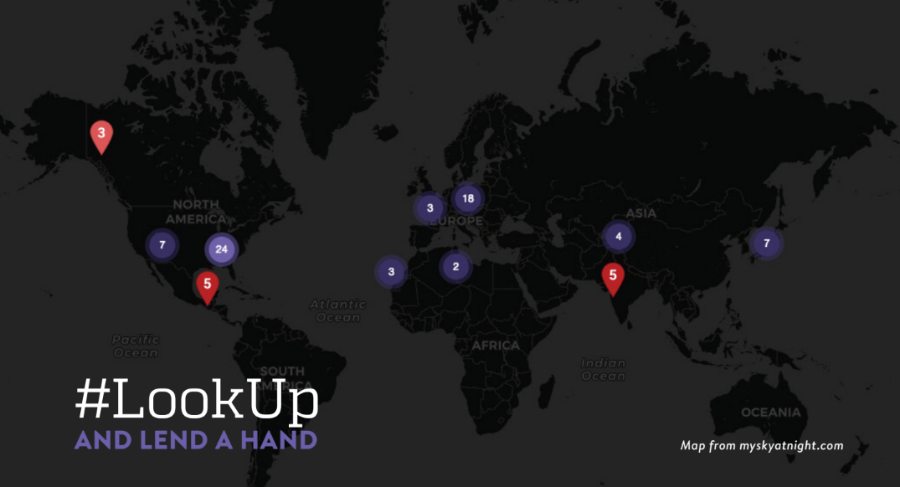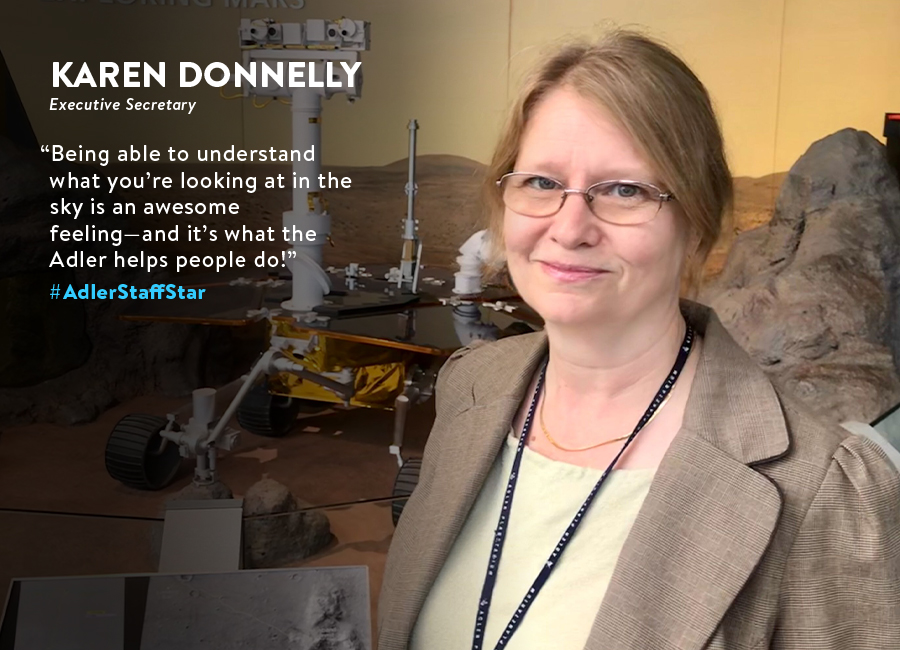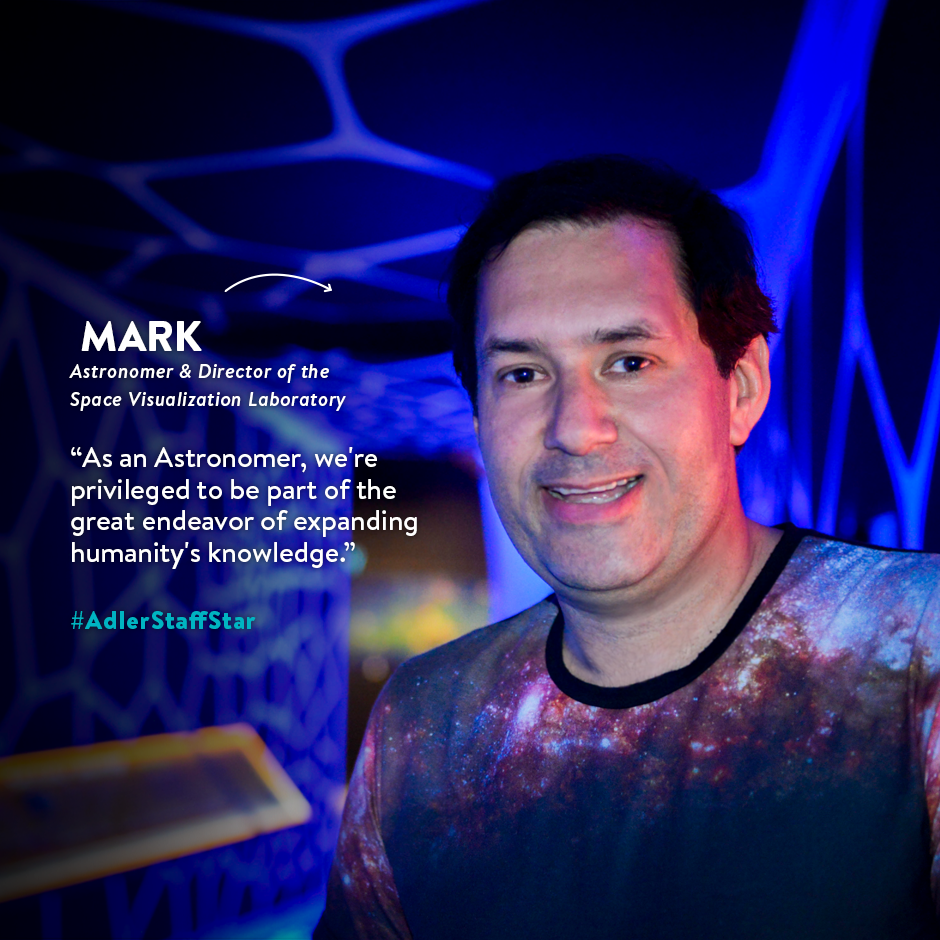Open Source Science
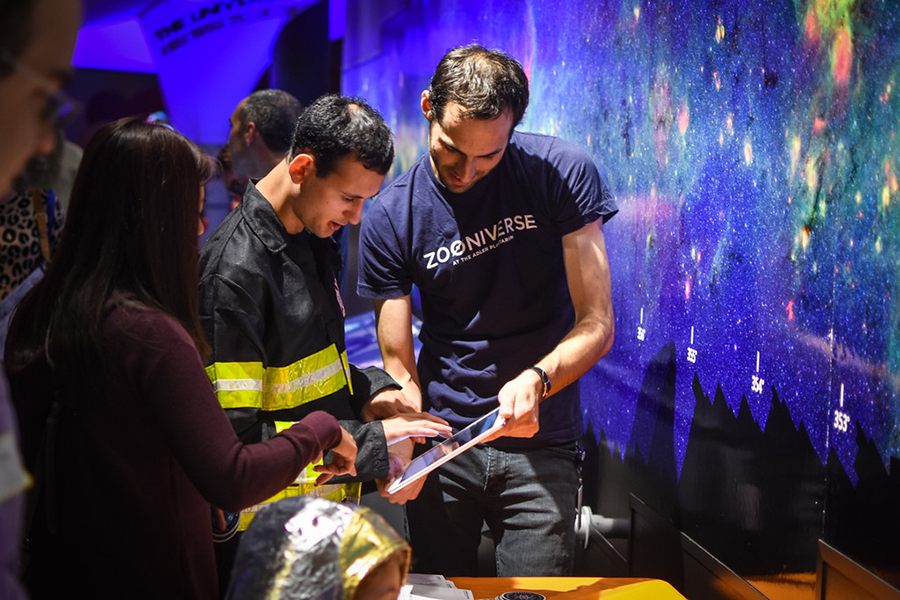
Thanks to a unique partnership between the Adler and the University of Oxford in the United Kingdom, 1.7 million people around the world are participating in frontier research, digitizing vast archives of historical documents, and even helping route supplies to hurricane survivors. Zooniverse was born more than a decade ago from a desire to make big things possible in scientific research, and its potential to change the way we explore our planet and our Universe is growing every day.
To understand how the Adler became a beacon for citizen science around the world, it helps to consider another widely successful crowdsourcing experiment: the open-source software movement.
Instead of jealously guarding their code and selling it (bugs and all) to interested parties, open-source developers publish their code in a public space where anyone can useit, copy it, tweak it, fix bugs, and add new features. You don’t have to be an expert coder to tinker with software, and sometimes tinkerers have really good ideas.
Back in the mid-2000s, Adler astronomer Dr. Geza Gyuk was following the movement with interest. He had even become a regular reader of a blog devoted to the legal questions that arise in open-source software development, which was itself a kind of open-source experiment: lawyers, developers, and enthusiasts working together to untangle thorny legal issues.
“It was really interesting to watch this sort of distributed expertise come into being,” says Geza. He began to wonder if the same model would work for scientific questions. Maybe, he thought, you could do research that wasn’t directed by a professor and carried out by a group of graduate students. Maybe you could pose a question to a community of people with different interests and areas of expertise, and the community could join forces to answer it.
Geza and fellow (former) Adler astronomer Dr. Lucy Fortsom put their heads together and started drafting a proposal to implement this “distributed research” idea at the Adler. They scoured the internet, looking for examples of the kind of work they wanted to do. “And that,” he says, “is about when we discovered Galaxy Zoo.”
As Geza and Lucy had been mulling over ways to harness the power of crowds in astronomy research, a team at the University of Oxford had gone and done it. Galaxy Zoo asked volunteers to help classify galaxies from a massive data set—a million images from the Sloan Digital Sky Survey telescope, far too many for a small research team to complete in a reasonable amount of time. The images could not be reliably classified by a computer, but any person with a computer and an internet connection—scientist or not—could do it easily.
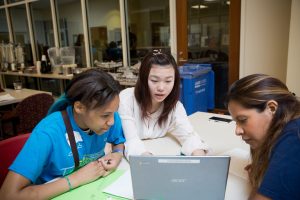
The Adler team got in touch with Galaxy Zoo co-founder Dr. Chris Lintott and a partnership began to flourish. Chris spent a year at the Adler, where he built a team of coders, designers, and educators who helped launch new projects in the spirit of Galaxy Zoo—a whole “Zooniverse” of projects.
Today, Zooniverse is the world’s largest online platform for citizen science, and its 1.7 million volunteers do a lot more than classify galaxies. They help biologists discover the hidden structures of cells, climate scientists decipher clues about the weather from 19th-century sailors’ logs, and geologists sort through fossils in Africa’s Great Rift Valley, to cite just a few examples. Some of these volunteers spend a few minutes on a project and move on, and others congregate in the discussion forums to puzzle over anomalies together.
Astrophysicist Dr. Brooke Simmons, a lecturer at Lancaster University in the UK, has been there since the beginning. She joined Galaxy Zoo as a volunteer when she was a graduate student—the day it launched—and joined the science team in 2011.
“Much of my research either couldn’t be done without the help of citizen scientists, or wouldn’t have been done, because working with the Zooniverse and Galaxy Zoo was what led to later research questions,” she says, adding that the very large data sets Zooniverse volunteers analyze are becoming increasingly common in astronomy and many other fields of study.
“With the public’s help, we are able to do cutting-edge science we couldn’t really do any other way.” In addition to working on her own research projects, in the past few years Brooke has helped Zooniverse branch out into disaster relief work. Zooniverse volunteers analyzed satellite images of regions hit by natural disasters, including Hurricanes Maria and Irma last year, to help relief workers direct aid and supplies to people stranded by the storms.
“It was a great way to use the lessons (and algorithms) we’d learned running projects in so-called ‘blue sky’ research, like astrophysics, to directly help people,” she says.
Another big change for Zooniverse in the past few years has been the addition of a free tool that research teams can use to launch their own projects. In the early days, every project had to be designed and built by the Zooniverse team, which put a hard upper limit on the number of new projects each year. In 2015, there were five. In 2016, there were 26, and last year, 40 new projects launched thanks to the Project Builder.
According to Dr. Laura Trouille, the Adler’s Vice President of Citizen Science, a lot of the recent project growth has been in subjects other than astronomy. In particular, she says, galleries, libraries, archives, and museums (GLAM) have discovered the power of the volunteer force to help them fully digitize their collections.
“Until those handwritten letters, specimen labels, hand-drawn images, etc. are transcribed, tagged with metadata, or marked in some way, they are not truly searchable. We’re seeing an explosion in the number of GLAM projects using crowdsourcing to unlock their digitized archives.”
“And for all our projects,” she adds, “the integration of human and machine effort is the true frontier.” As massive data sets pour in from sources like the Large Synoptic Survey Telescope, Zooniverse will have to strike a delicate balance to keep volunteers interested and motivated while also encouraging them to move through the data quickly and efficiently.
Even with all its recent growth, Laura says Zooniverse is poised to get even bigger in the coming years. At the moment, about 80 percent of Zooniverse participants are in the United States and the UK. When Zooniverse makes inroads into some of the world’s most populous countries, a whole new wave of projects and volunteers—and discoveries—will surely follow.
“A major effort over the next few years will be to work with partners in India, China, South America, and others who are trusted members of those communities and who can help get the word out. One point seven million is just the tip of the iceberg.”




